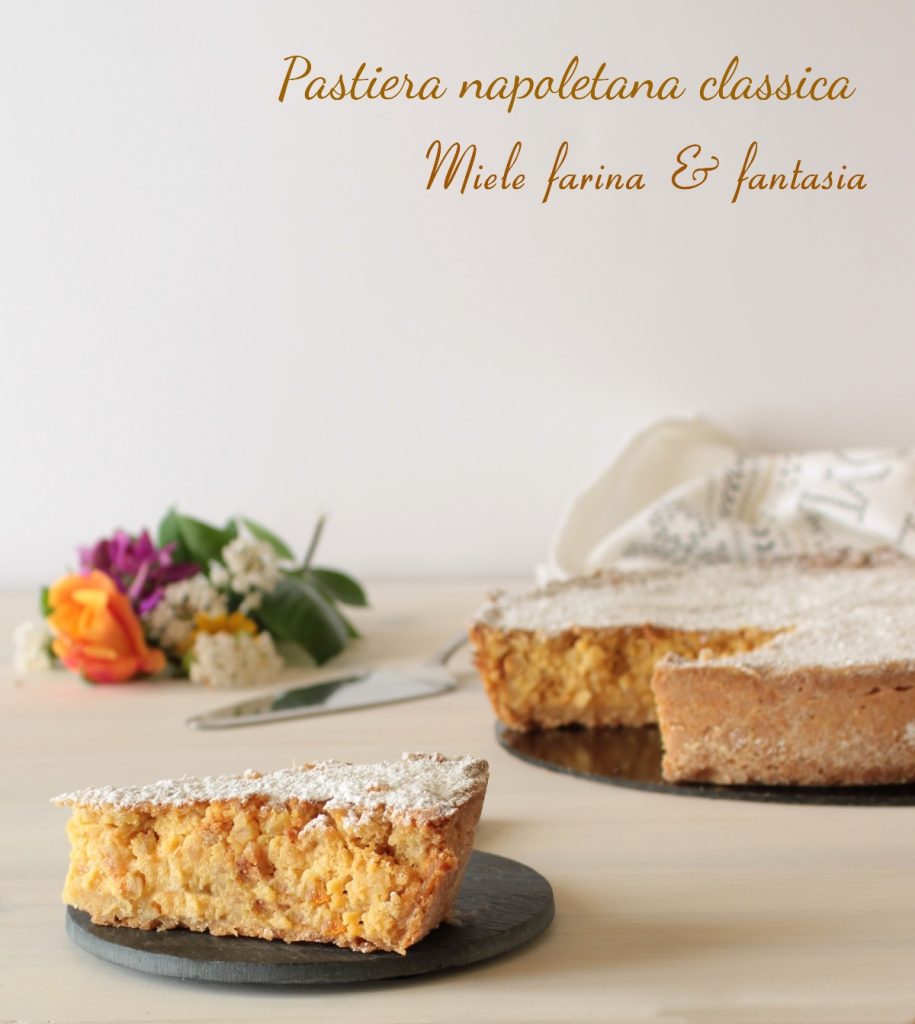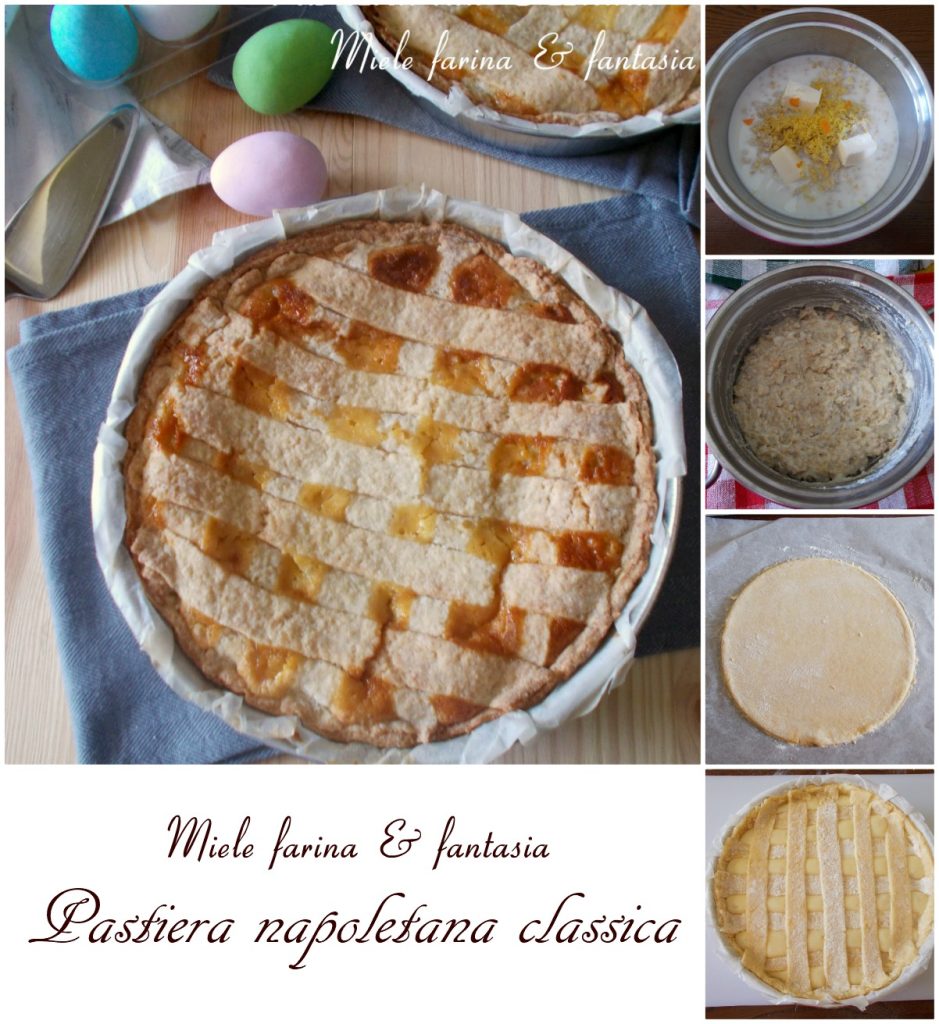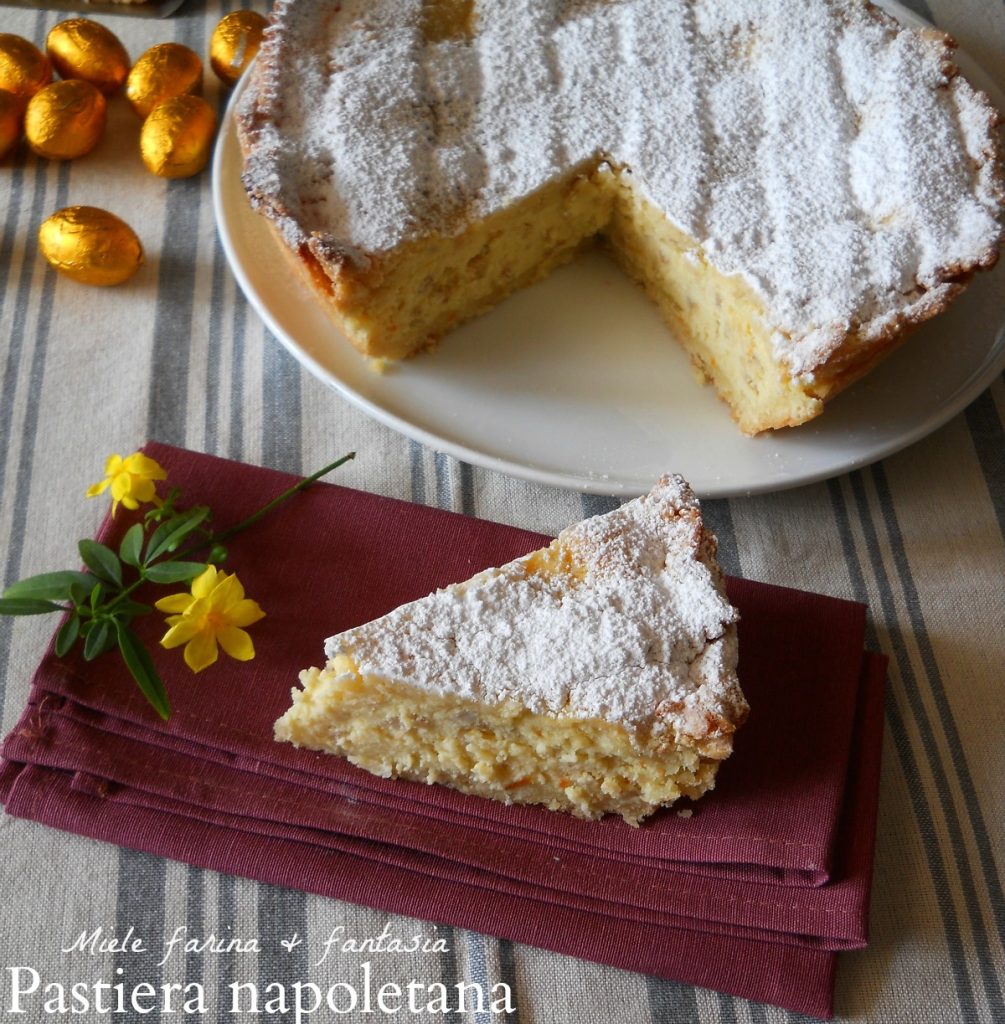The Neapolitan Pastiera is undoubtedly the leading dessert among the sweets from Campania to prepare for Easter and, to tell the truth, we also make it for Christmas at my house. It consists of a crunchy shortcrust pastry shell with a very fragrant, rich, delicious, soft, and moist filling, featuring ingredients like ricotta and cooked wheat. This traditional dessert, which has undergone many variations and reinterpretations over time, traces its roots back to the distant 1600s. Every family has its own recipe and version, and it is usually prepared a few days in advance, typically on Holy Thursday, so that it can fully express its aromas and extraordinary flavor over time. In my family, the task of preparing the pastiera fell to my father, a true master at making it, and indeed, his pastiere were much in demand by relatives and friends.

- Difficulty: Easy
- Cost: Medium
- Preparation time: 3 Hours
- Portions: 10
- Cooking methods: Oven, Stovetop
- Cuisine: Italian
- Seasonality: Easter, Easter Monday
Ingredients
- 1 Jar of pre-cooked wheat
- 1.8 oz Butter
- 1.3 cups Milk
- to taste Orange and lemon peel
- 17.6 oz Cow's milk ricotta
- 17.6 oz Sugar
- 7 Eggs (medium)
- 1 pinch Fine salt
- 1 Orange flower water (small vial)
- 1 teaspoon Ground cinnamon (optional)
- 1/4 teaspoon Vanilla paste (or 1 packet of vanillin)
- 17.6 oz All-purpose flour
- 7.1 oz Sugar
- 7.1 oz Butter in chunks
- 4 Eggs (medium)
- 1 pinch Fine salt
- 1 tablespoon Strega liqueur
Tools
- 2 Baking pans 10-inch diameter
Preparation
1) Prepare the wheat. Drain the wheat, rinse it under running water, and place it in a pot along with the zest of a lemon, an orange, butter, and milk.
Cook the wheat on low heat, stirring very often until it has completely absorbed the milk and a kind of cream has formed (this will take about 40/50 minutes). Let the mixture cool completely.
You can then decide whether to leave the wheat grains whole or blend them, perhaps with the candied fruit, to add to the other filling ingredients. The final result will not change; it’s just a matter of taste.
2) Prepare the shortcrust pastry. Sift the flour, add the sugar and salt. Mix the dry ingredients with your hands and form a well in the center where you will place the slightly beaten whole eggs, the liqueur, and the pieces of cold butter. Using your hands, quickly mix all the ingredients until you obtain a firm dough which you will divide into two equal parts. Wrap them separately in baking paper or plastic wrap and place them in the fridge for at least an hour.
3) Prepare the filling. In a large bowl, sift the ricotta to make it softer and creamier, add the cooled wheat mixture, sugar, slightly beaten whole eggs, all the aromas, the pinch of fine salt, and mix until you get a creamy mixture similar to raw cake batter.
Cinnamon is not included in the original recipe, but I add it because, personally, I find that it gives an important additional aromatic note that blends and marries perfectly with the other spices.
4) Take one of the shortcrust pastry doughs out of the fridge and roll it out with a rolling pin on a well-floured surface. The thickness of the dough should not be too thin as it needs to support a “heavy” filling; half a centimeter is the ideal thickness.
Place the dough in one of the pans (buttered and floured or covered with baking paper). Trim the excess shortcrust pastry from the edges with a small knife.
5) Fill the shortcrust pastry shell with the filling, leaving it about an inch from the edge.
6) Cut strips of shortcrust pastry to create the classic grid decoration and cover. The first classic Neapolitan pastiera is ready.
If there is leftover shortcrust pastry, you can create more strips to place on the pastiera. The grids help contain the filling, which tends to puff up during cooking; I usually put 8-9.
7) Take the second shortcrust pastry dough out of the fridge and repeat the process to complete the second pastiera.
8) Preheat the oven to 392°F. Bake the pastiere in the already hot oven, at mid-height, for about 1 hour and 30 minutes. The pastiera should brown evenly.
Towards the end of cooking, the top of the pastiera will start to puff up, forming a sort of dome that will then deflate and settle a bit in the center once out of the oven. Once cooked, take them out and do not touch them for a few hours (better a day) due to the delicacy of the cake. Sprinkle the pastiere with plenty of powdered sugar once they are cold.
Since ovens do not all bake the same way, if the shortcrust pastry shell darkens too much before the end of cooking, lower the temperature to 356°F.
Many people ask if it is possible to freeze the pastiera? Yes, it is possible, provided some small but important precautions are observed. You can decide whether to slice it or leave it whole, but in any case, it must be perfectly sealed in baking paper and then plastic wrap to avoid as much as possible moisture or ice penetrating inside the cake, ruining the taste and final texture once thawed.
You can thaw it by leaving it at room temperature without touching it and without forcing the thawing process, freeing it from paper and plastic wrap that could retain moisture, making it wet or, worse, soggy.
In general, I take it out of the freezer at least 12 hours before, removing the baking paper and plastic wrap and leaving it on a plate, so it recovers its aromas and flavors well.
Extra idea. You can make your own candied orange peels easily and quickly and you won’t leave them anymore.



